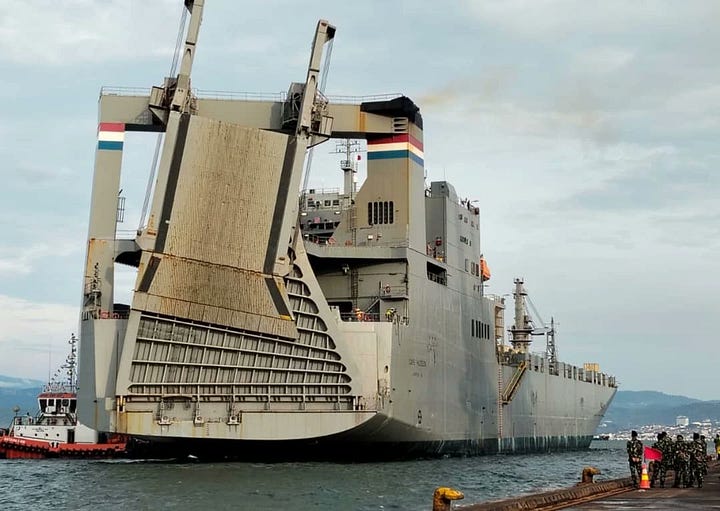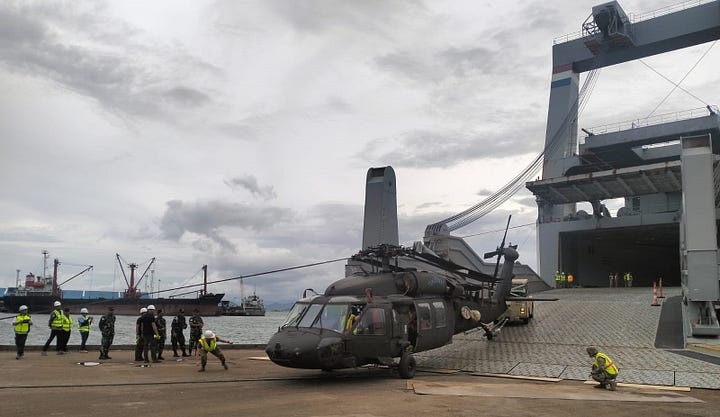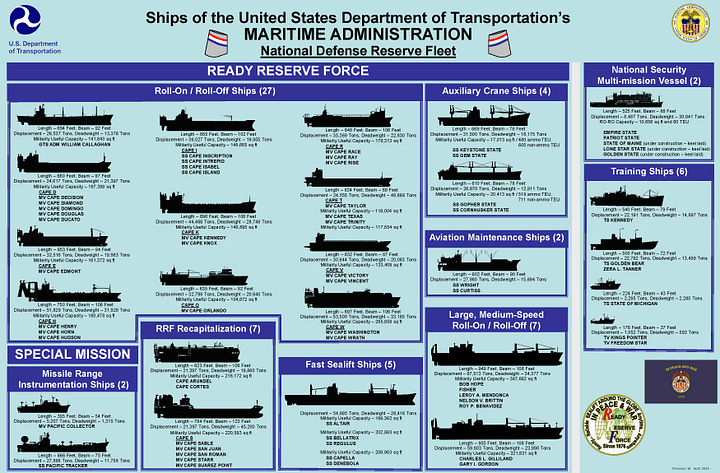Comparing The American And Chinese Use Of Government-Owned Merchant Ships To Bolster Military Logistics
🇨🇳 🇺🇸
Note: The following text was originally posted on my X/Twitter account.


The United States gets a lot of mileage from its employment of government-owned, civilian-crewed merchant ships in support of military operations in times of peace, crisis, and war. The images in the following post show the MV Cape Hudson, a roll-on/roll-off (ro-ro) ship that is part of the United States' National Defense Reserve Fleet, transporting military equipment to Sumatra, Indonesia, in support of the 2025 iteration of the Garuda Shield military exercise with Indonesia. The National Defense Reserve Fleet is administratively part of the U.S. Department of Transportation's Maritime Administration (image 3) and should not be confused with Military Sealift Command (image 4), which is part of the U.S. Navy and also relies on civilian mariners to crew its non-combat ships.


While China also employs civilian-crewed merchant ships to support the operations of the People's Liberation Army (PLA)—including ro-ro ships in amphibious landing training events—there is little scope for comparison with the United States' regular, sustained, and widespread employment of civilian-crewed merchant ships in support of military operations. While China does make heavy use of the nominally civilian—in practice de facto paramilitary Chinese Maritime Militia, the Chinese Maritime Militia does not operate large ships that can be used to support PLA logistics and is more generally nothing like the United States' National Defense Reserve Fleet, let alone the U.S. Navy's Military Sealift Command. It remains to be seen whether China will emulate the American approach in this often overlooked area of military logistics.

